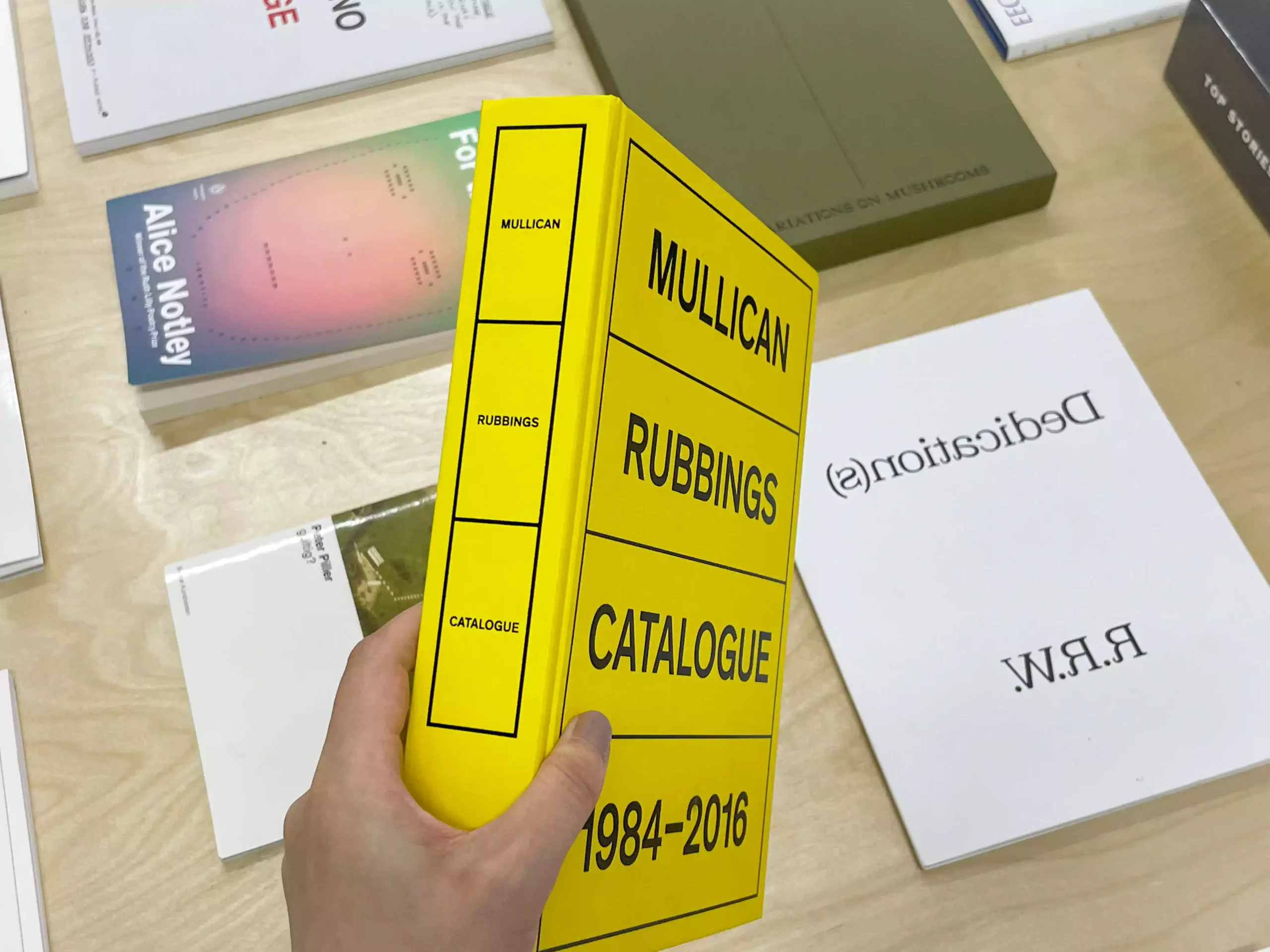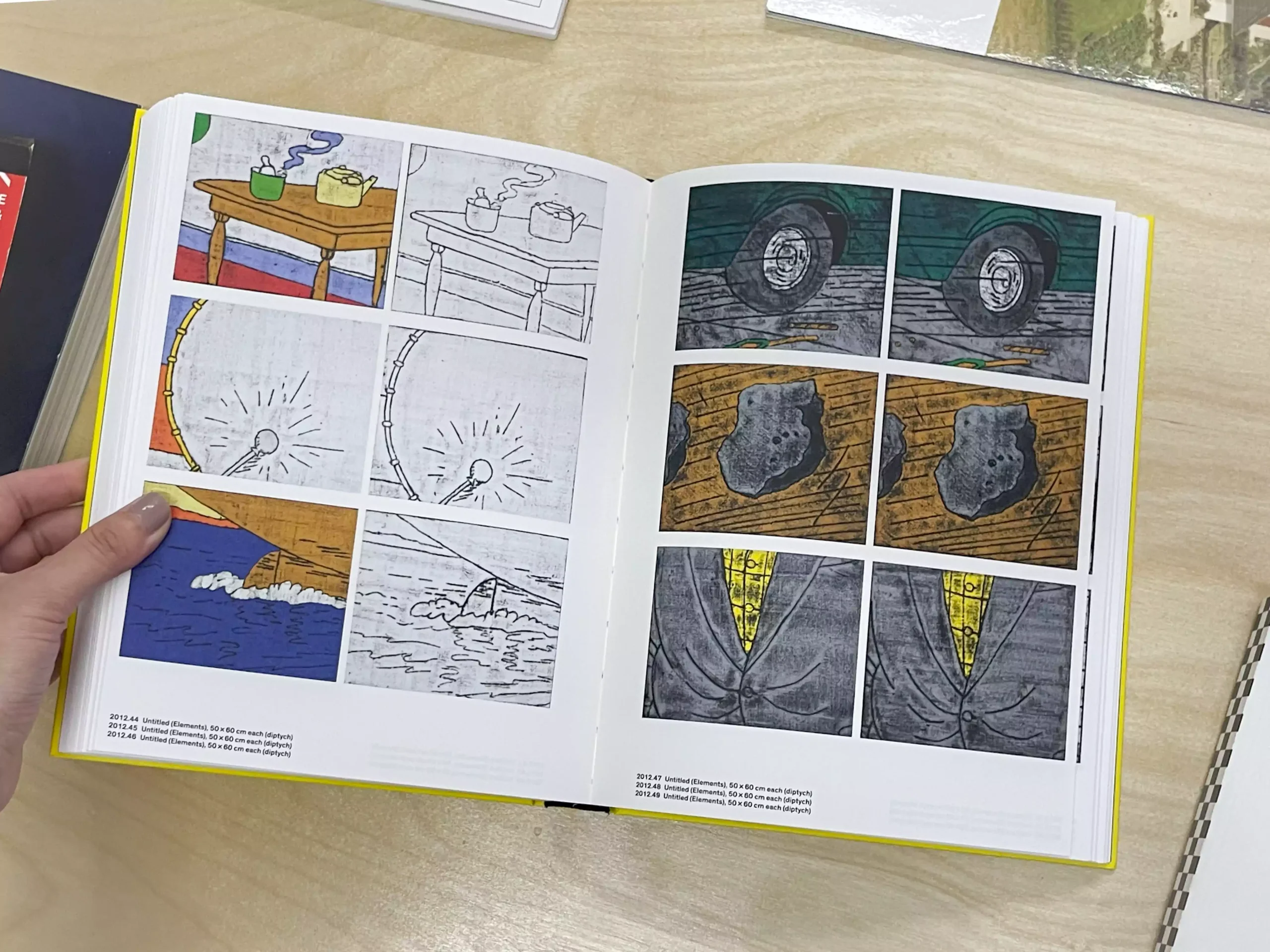Rubbings Catalogue 1984-2016
Matt Mullican
One of Matt Mullican’s central and most consequential inventions, the so-called “Rubbings,” are a kind of “frottages,” a technique the artist uses to produce specific pictures. The book presents a catalogue of the Rubbings on canvas from 1984 to 2015. It comprises around 500 works, documented by images and catalogue entries (the book also contains an essay by Dieter Schwarz).
From the beginning of his career, Mullican looked for pictures that would not be paintings; thus, he used banners, the traditional carriers of signs, posters, and, in 1984, he realized his first Rubbing. He used a cardboard plate on which the canvas was placed; by rubbing with an oil stick the cardboard reliefs, forms became visible on the canvas. This way, Mullican was able to transfer complex representations onto canvas; the result is a picture of something that is not present, it is a form of copy. The cardboard plates may be used for other works and so the imagery can reappear in different configurations. Each Rubbing is a single work and at the same time a reproduction, like a print, part of a sequence which contains picture elements from different sources.
Following the Rubbings from 1984 to recent times, it becomes visible that they represent the motives and themes the artist worked with over the years. The sequence of the Rubbings appears therefore like a diary of Mullican’s work.
Published on the occasion of the exhibition “Nothing Should Exist” at Kunstmuseum Winterthur, Switzerland, from June 11 to October 16, 2016.
Working in the fields of performance, installation, digital technology and sculpture, Matt Mullican (born 1951 in Santa Monica, lives an works in New York) is seeking to develop a cosmological model based on a personal vocabulary combining the formal and the symbolic. Hypnosis and cartography are his principal modes of operation. He explores functional sign systems of his own devising through activities under hypnosis, in a permanent oscillation between the real and its schematization, between fiction and its physical reality.
Edited by Dieter Schwarz.
Text by Dieter Schwarz.
Matt Mullican的核心和最重要的发明之一,即所谓的 “Rubbings”,是一种 “frottages”,是艺术家用来制作特定图片的技术。本书介绍了1984年至2015年的画布上的Rubbings目录。它包括大约500件作品,通过图片和目录条目进行记录(书中还包括Dieter Schwarz的一篇文章)。
从他的职业生涯开始,Mullican就在寻找不属于绘画的图片;因此,他使用了横幅、传统的标志载体、海报,并且在1984年,他实现了他的第一个Rubbing。他使用了一个纸板板,将画布放在上面;通过用油画棒擦拭纸板上的浮雕,画布上的形式变得清晰可见。这样,Mullican就能把复杂的表象转移到画布上;结果是一幅不存在的东西,它是一种复制的形式。纸板可以用于其他作品,因此图像可以以不同的配置重新出现。每幅Rubbing都是一个单独的作品,同时也是一种复制,就像印刷品一样,是一个序列的一部分,包含了来自不同来源的图片元素。
从1984年到近期的擦拭作品,我们可以看到它们代表了艺术家多年来的工作动机和主题。Rubbings的序列因此看起来像Mullican的工作日记。
为2016年6月11日至10月16日在瑞士温特图尔艺术博物馆举办的 “没有什么应该存在 “展览而出版。
Matt Mullican(1951年生于圣莫尼卡,在纽约生活和工作)在表演、装置、数字技术和雕塑等领域工作,寻求在结合形式和象征的个人词汇基础上发展一种宇宙学模型。催眠和制图是他的主要操作模式。他通过在催眠状态下的活动探索他自己设计的功能符号系统,在真实和它的图式化之间,在虚构和它的物理现实之间进行永久的摇摆。





